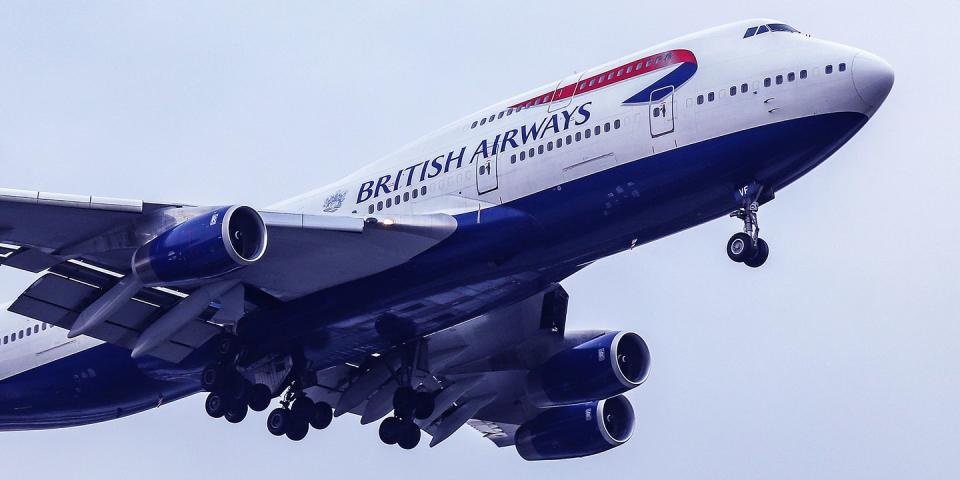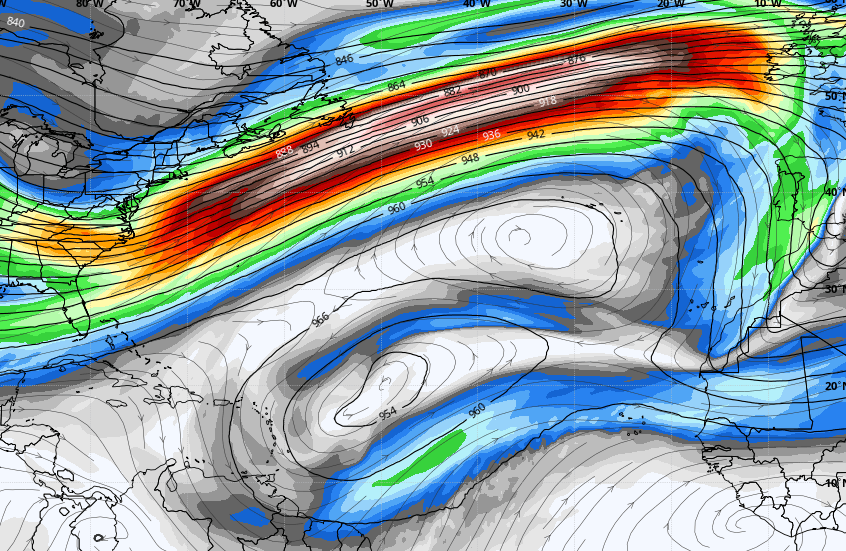Here's What Caused the Fastest New York to London Subsonic Flight Ever

A fluke storm system sped up international flights to record-setting speeds.
The flights were faster than the speed of sound, but didn't break the sound barrier because of surrounding wind speed.
The top speed for a 747 is about 570 miles per hour (mph), and this flight topped out at 825 mph.
A British Airways plane has broken the record for fastest subsonic flight—by going faster than the speed of sound. The flight from New York to London arrived almost two hours early after a flight lasting 4 hours and 56 minutes. British Airways also just narrowly beat two Virgin Airways flights that took one minute and three minutes longer, respectively.
What happened? Well, the jet stream was much more powerful than usual, blowing more than 200 miles per hour (mph) and carrying the planes at that high ambient speed. On Friday, the Washington Post predicted the wildly fast flights and shared a thorough analysis. The overall weather system causing the super-fast jet stream linking New York and London came from a “bomb cyclone” near Greenland.
The storm system generates hurricane-force winds at its source, then those winds significantly mellow out to “just” 200 mph further away. The Washington Post explains that storms closer to the north and south poles are larger and their force dissipates more quickly than storms at lower latitudes.

By the end of the weekend, the storm coming from Greenland, called Storm Ciara in the affected U.K., was paired with a system off the east coast of the southern U.S. to make a wind-powered airplane hyperloop from New York to London. The Washington Post compares the system to moving sidewalks at an airport: you maintain your own “cruising speed” while the walkway carries you at a different base speed. The top speed of the Boeing 747 itself is about 570 mph, and this flight maxed out at 825 mph.
The difference between “ground speed” (zero bonus) and “air speed” (200+ mph bonus) is also why this speed, while technically faster than the speed of sound, didn’t ever go supersonic. In theory, a series of nested tunnels with 200-mph winds could lead to an airplane in the center going thousands of miles an hour, but never breaking the sound barrier.
The wind tunnel effect from Storm Ciara did speed up flights, but of course, it’s not worth the destruction the storm caused when it made landfall. That means “wait for a stormy wind tunnel” isn’t a viable strategy for airlines to speed up flights or reduce fuel—it’s a coincidence that will occasionally cause new record speeds. And in general, airlines are reducing flight speeds to conserve fuel.
In 2019, the airlines made news in a bad way when the U.N. predicted that flight emissions could triple by 2050 until they take up a quarter of the globe’s carbon emissions. Air cargo is a tiny percentage of daily flights around the world, meaning passenger planes are still responsible for the vast majority of these emissions. Some general cost-cutting measures could safe fuel as a secondary effect, like overselling flights in order to fly fewer, but fuller, airplanes each day.
In some countries, the culture is beginning to move away from flying when possible, but globally, the middle class with access to tourism continues to grow at a rapid speed. Airlines have worked to cut emissions by making more efficient aircraft, researching alternative fuels, and investing extensively in carbon offsets. But as with cars and other vehicles, planes have optimum cruising speeds that are the most efficient for fuel, and this is usually slower than impatient travelers have grown to expect.
You Might Also Like

 Yahoo News
Yahoo News 